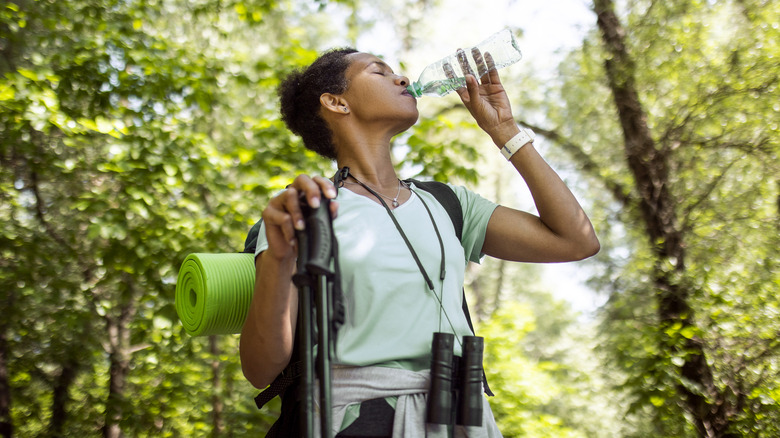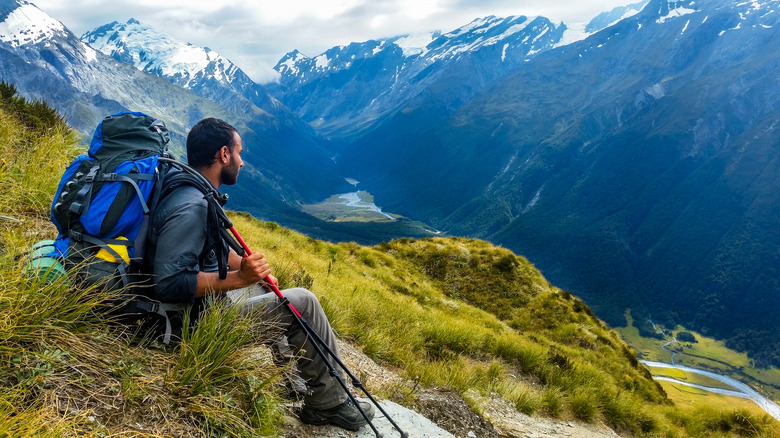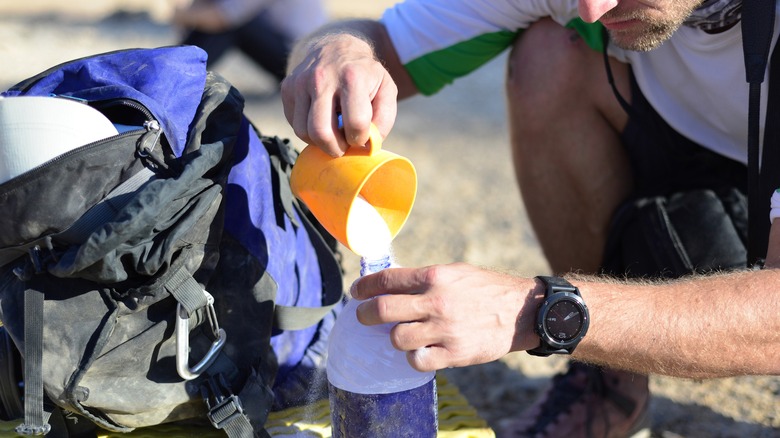Water Isn't Always The Best Drink To Take On Your Hike
Whenever you head out into nature for a hike, it is important to pack more than enough water to prevent dehydration. Although most of us don't really worry too much about being slightly dehydrated, studies have shown that even mild dehydration can impact physical and mental performance (via Reuters). So, if you want to have the best hike possible, staying hydrated is key and the best way to do this is by drinking lots of water. Unfortunately, on tough hikes, water might not be enough — and that's where electrolytes come in.
Electrolytes are a group of minerals including sodium, magnesium, potassium, and chloride that are often lost through sweat and exercise. Typically, our bodies naturally replenish these minerals through our daily intake of food. However, according to the University of New Hampshire, there are certain situations where electrolyte drinks can help you hydrate better than normal water. The only problem is that these drinks also often include large amounts of sodium and sugar and aren't necessarily healthy to consume all the time. So, how can you decide whether or not you will need electrolytes on your next hike?
When to bring electrolytes on a hike
One good way to decide whether or not you should bring electrolytes with you on your next journey is to look at the length and intensity of your planned route. If the trail is quite strenuous and will constitute more than an hour of intense exercise, bringing enough water and an electrolyte drink on top of that is a good idea to help you replenish those minerals lost through sweat and prevent dehydration. Other situations where you may want to bring electrolytes with you include if it is a particularly hot day or if you are a naturally heavy sweater. This is because the more you sweat, the faster you will lose electrolytes.
Loss of electrolytes through exercise can make you tired and, in rare cases, may cause an imbalance. If you typically experience symptoms of electrolyte deficiency during your hiking trips, you may want to keep electrolyte drinks or tablets with you all the time just in case. Symptoms of low electrolytes include muscle cramps or twitching, extreme thirst, headache, fatigue, and fast or irregular heartbeat, per Healthline.
What types of electrolytes are best?
In general, electrolytes come in three forms — already mixed sports drinks, tablets, and powders. All forms work as well as the others in delivering the necessary minerals into your body and the one you go for will come down to personal preference.
The advantages of premixed sports drinks, like Gatorade, include that they are convenient to buy, don't require time to dissolve, and come in premixed ratios. This makes them a great option for hikers who don't want to stop and spend time mixing up their electrolytes and waiting for them to dissolve. They are also designed to taste great and contain extra sugar which can provide a quick energy boost.
On the other hand, electrolytes in tablet and powder form are great for backpackers and trekkers who need to save space and weight wherever they can. They are also easy to store in first-aid kits because of their small size. Furthermore, these options put you in control of the ratios and let you decide how strong or diluted you'd like your electrolyte drink to be. The main disadvantages of tablets and powders are that you need to spend time mixing them yourself and waiting for them to dissolve.


